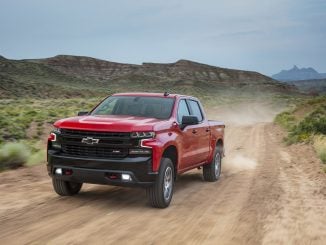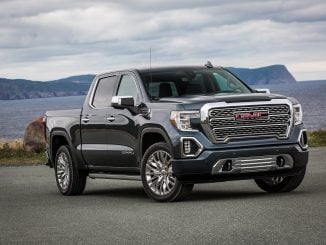SAN DIEGO — As much as I like reviewing stunning rides from Rolls-Royce or Aston Martin, the real value is evaluating the most popular cars to understand better why people are buying them.
It’s not possible to review cars in a vacuum. You have to understand what people are looking for and their priorities when choosing a new vehicle. Generally, I think people want to get from point A to point B reliably and without any fuss.
For every person who wants to show off with the new Corvette, 10 or 20 or 50 more who just want to get the kids to school or have a comfortable commute.
That’s why I was so excited to get behind the wheel of the Honda CR-V Hybrid, my test car this week. Along with the Toyota RAV4, the CR-V is one of the best-selling vehicles that isn’t a pickup truck over the past few years.
Get these reviews in your email every week with Jordan Golson’s free car reviews newsletter.
My review car was a fully-loaded Hybrid Touring edition priced at $37,920, including destination. That’s a lot, especially for a crossover that starts in the high $20,000’s, but it includes many appealing features, especially in the tech and luxury realm.
Bumping up to the Touring from the lower trims gives you things like a wireless phone charger, 19-inch wheels, parking sensors, and a few other niceties. But the Hybrid EX and EX-L, which start around $32,000 and $35,000 respectively, are potentially better buys than the fully-loaded Touring.
That’s especially true since they use the same all-wheel-drive hybrid powertrain with terrific fuel economy. The hybrid CR-V certainly isn’t a speed demon, offering just 212 horsepower from its 2.0L four-cylinder engine.
It’s not fast, but it’s both quieter and smoother than the non-hybrid option and delivers terrific fuel economy at an EPA-estimated 40/35/38 city/highway/combined.
The comprehensive HondaSense safety package is standard, including automatic emergency braking, lane keep assist, road departure mitigation, and adaptive cruise control. However, I continue to be disappointed with the experience of using Honda’s adaptive cruise control.
One of the best-selling vehicles that isn’t a pickup truck.
The system appears confused when following another vehicle, trying extremely hard to stay the perfect distance away from the forward car. This means it’s constantly on and off the brake and throttle, which can be moderately annoying if you notice it happening, but it certainly isn’t a safety issue. It reminds me a little bit of a new driver, trying to figure out how much pedal input to use.
The CR-V is pleasant enough to look at on the outside if you don’t mind having the same car as lots of other people. Make sure you remember where you parked because CR-Vs are everywhere, which I had never really noticed before I was driving it. At one point, there were four CR-Vs in the same lane going down the highway nose to tail.
Inside I found the cabin layout curiously designed but highly functional. The shift lever is mounted upon the dash, below the climate controls and the infotainment screen. This frees up space between the seats for cupholders, a wireless phone charger, and ample storage.
The Honda does have wired Apple CarPlay and Android Auto, but I found the CarPlay challenging to keep connected. At one point, I had to reset the stereo entirely (press and hold the volume knob for 10 seconds) to get it to reconnect to my iPhone. The 7-inch infotainment screen is adequate, but the soft-touch buttons to the left of the screen (labeled Home, Map, Audio, Phone, Back) are a bit of a waste of space.
I love the climate controls, though, with giant knobs to control the temperature and easy-to-find buttons for the heated seats.
Other creature comforts with the Hybrid CR-V include standard remote start, a clever auto-locking feature when you walk away from the vehicle, and a (non-panoramic) moonroof.
Between the reasonable pricing and the terrific fuel economy, the CR-V achieves the everyman goals of hauling you and your stuff from point A to point B. It’s easy to see why Honda sells so many of them, and the ruggedized Toyota RAV4 strikes a big contrast to the Honda product.
I suspect folks who check out both will have strong feelings about which one appeals more, which is a testament to both companies since the crossovers are so similar on paper.
I wish Honda would offer a plug-in hybrid version of the CR-V, like Toyota does with the RAV4 Prime, but perhaps that’s coming down the line. If you’re on the market for a compact crossover, the Honda CR-V Hybrid is (unsurprisingly given the sales success) worth a look.



